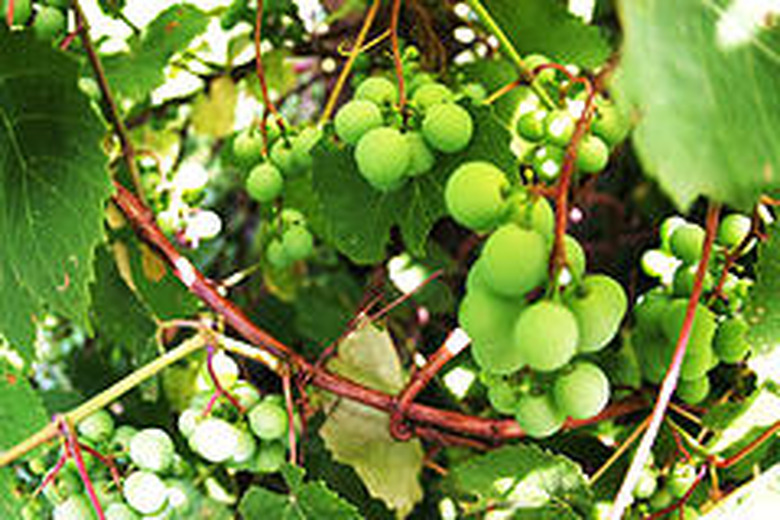How To Fertilize Grapevines
There is nothing more romantic, in a landscape, than a trellis of grapevines. You may never get to Tuscany, Italy, but you can create a setting at home that feels like an Italian vineyard. Whether you are thinking about putting in grapevines, or have inherited them with a newly-purchased home, fertilize the vines to keep them healthy so they produce an ample harvest.
Step 1
Fertilize the soil before you plant the grapevines. Grapevines need potassium, lime and phosphorus; do a soil test before fertilization to determine the pH of your soil (see Resources). If you have sandy soil, proper pH for grapevines is 6.5. For clay soil, it is 6.0.
- There is nothing more romantic, in a landscape, than a trellis of grapevines.
- Grapevines need potassium, lime and phosphorus; do a soil test before fertilization to determine the pH of your soil (see Resources).
Step 2
If you have established grapevines with a pH of less than 5.6 in sandy soil (or 5.1 in clay soil), add lime (domolitic limestone) fertilization to the soil in the fall or spring.
Step 3
Add phosphorus (bone meal, colloidal phosphate or rock phosphate) to your grapevine's soil if the soil test shows a reading of less than 12 ppm. Spindly vines and stems with purple streaks are signs of phosphorous deficiency.
Step 4
Work in potassium, or potash, (compost, cow manure, wood ash or granite meal) to your grapevine's soil if your soil testing kit shows a reading of less than 120 ppm. However, do not overuse potassium in the soil, as too much can cause a magnesium deficiency. Add potassium in the spring. Apply it several inches away from the grapevine's trunk to avoid injuring the plant.
- If you have established grapevines with a pH of less than 5.6 in sandy soil (or 5.1 in clay soil), add lime (domolitic limestone) fertilization to the soil in the fall or spring.
- Add phosphorus (bone meal, colloidal phosphate or rock phosphate) to your grapevine's soil if the soil test shows a reading of less than 12 ppm.
Step 5
Mix some magnesium into your soil if your soil testing kit shows a reading of less than 100 ppm. Test your soil again in the second and third years after the first application, as it takes time for magnesium to work into the soil, and you may need to add more. Domolitic limestone will increase the magnesium in the grapevine's soil and improve its pH balance.
Step 6
Spray your grapevines with calcium (calcium chloride) if the soil tester reads below 1,000 ppm. Do not apply it if the weather is too hot (above 25 C) or humid. Do not apply calcium when weather conditions are wet or cold. Either condition may damage the plants.
- Mix some magnesium into your soil if your soil testing kit shows a reading of less than 100 ppm.
- Spray your grapevines with calcium (calcium chloride) if the soil tester reads below 1,000 ppm.
Step 7
Add organic fertilizer to your grapevine soil with grape pomace. This is comprised of grape seeds and skins from organic wineries. It is especially good for lowering the pH level when the soil is too alkaline. Grape pomace will add micronutrients to your soil in proper proportions.
